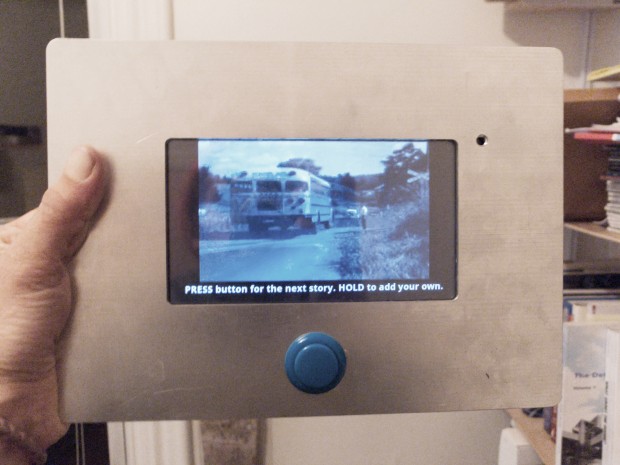
MyPS: see below
Earlier this year we introduced to you #networkedurbanism, now that the “studio report” book is almost ready, we are publishing a series of posts showing some of the projects that the students have developed during the 2010, 2012, and 2013 studios at the GSD.
In this last #networkedurbanism post we present to you three projects held together by the common thread of time. The first one deals literally with our personal time organization, the second with the transmission of memories tied to a specific place, and the last with the the permanence of personal memories through time and beyond life.
AEON
Angela Clubb and Saraf Khyati developed a time-management tool that privileges qualitative time organization, the project responds to the linear, rigid, future oriented, and quantitative vision of time that we commonly find in our agendas and in time-managing instruments. AEON is a reaction to the way we perceive time in the western modern civilization, a deeply mechanized linear perception, which contributes to amplify the feeling of frustration and anxiety we have when we think we are wasting time, when we don’t have enough time to do all the things we would like to do, when we feel that our days are imbalanced and we put aside important things. AEON “holistic revisualization conveys a sense of time as whole and present versus linear and constantly passing us by. The tool employs complementary functions and design principles: alternating periods of focus and rest; emphasizing the present and reflecting on the past.”
The app itself consists of four functions. Day is a tool that emphasize a focus on the present, it visualize scheduled and unscheduled activities on a holistic 24 hours-day view, and allows the user to organize the activities by dragging them. Meta is oriented to the past, it’s a tool to track and analyze activities to reveal past patterns an increase self awareness. The Space function integrates downtime throughout the day to facilitate cognitive rest. Focus, on the other hand is a tool that supports sustained attention by facilitating a disruption-free environment where email, chat, and calls can be blocked.
You can read more about AEON on #networkedurbanism, find their final presentation here. In 2013 this project was shortlisted as a semi-finalist for the Harvard Business School “Pitch” competition.
Corner Stories
Matt Swaidan project began with a reflexion about memory and places. Assuming that our lives are ever more transient, and that the stable relationship that people had with places is now evaporating he poses a question: “What happens to the identity of a place when its residents have no memory of it?” There are organizations in Boston (like Cambridge Historical Commission and Southe End Historical Society) that collect and organize memories about places, but it’s not easy for the people to get involved in these organizations and to contribute with their own stories, the stories from their neighborhood or their family. Corner Stories is a device that uses current technology to collect personal stories, pinpoint them on a map, and share them with others.
Swaidan describes his project as “a device that mounts to the nearly ubiquitous street sign. As a person passes by, their curiosity is aroused by a foreign looking object, inviting them to see what happens when the push the brightly colored button. When she does, she is treated to a highly personal “seed” story, one that takes place on the very ground upon which she stands. (…) The viewer is then invited to push the button again, to record their own story about that place, or to react to the story just played. Over the term of their deployment, the device accrues more and more layers of personal narrative attached to the place.“
You can read more about it on #networkedurbanism.
MYPS
Jennifer Mills focused her work on personal memories, the memories a person can transmit to the loved ones, actually the farewell memories a person wants to leave. MyPS is a project that uses the capacity of mobile devices, provided with GPS tracking and video recording, to store on the cloud georeferenced messages, videos, pictures etc. that the autographer’s companions will receive after the autographer’s passing using a specific app. MYPS uses common devices and common media sharing formats to “to make the process of composing farewells incremental” and then, delivering journeys that can be “experienced all at once or gradually, immediately or years after the loved one’s passing, making the process of grieving incremental as well.”
As the author says the importance of georeferencing memories is thath “by attaching the media to specific locations, MYPS engages the part of our brain that already geotags our memories. Neurobiologists have recently discovered that the hippocampus attaches locations to memories, accounting for the phenomenon in which a familiar place or scene brings a person back to an experience they may not have thought of in years. The vividness that place brings to memories adds strength to the simple messages stored by MYPS, resulting in journeys that are emotionally powerful yet easier to compose.”
You can read more about MyPS on #networkedurbanism.


[…] few days ago, Ecosistema Urbano posted a new update with the description of some projects developed during de Networked Urbanism studio at GSD. Most […]